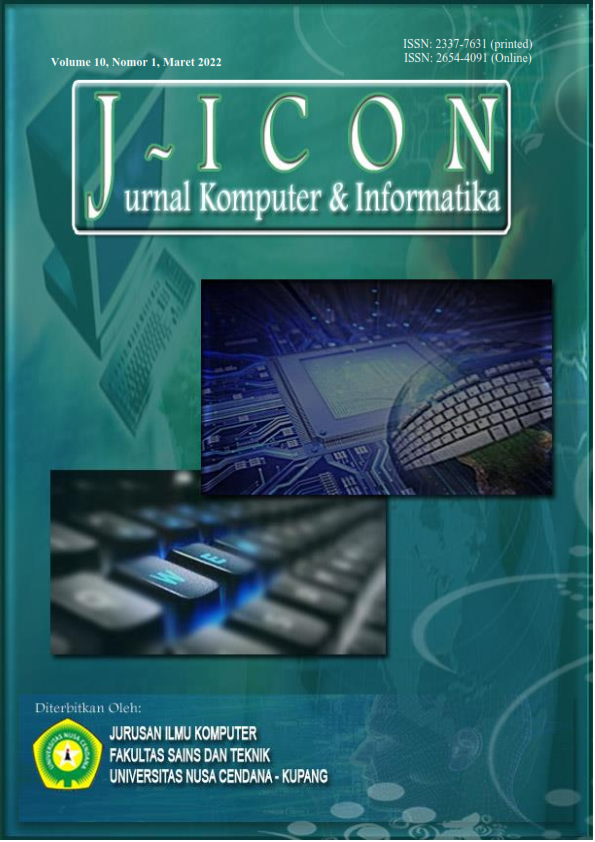Security of Portable Document Format (PDF) Using Elliptic Curve Cryptography (ECC) Algorithm
Abstract
The use of digital documents has been widely used in various groups, organizations or agencies. One of the digital documents that often used is the Portable Document Format (PDF). An algorithm needed to implemented in the software, so that it can secure these documents from parties who can harm. One of the algorithms that can be used is Elliptic Curve Cryptography (ECC). ECC has an advantage on the level of data security with a key not too long. Encryption carried out on a 16 Bytes PDF header using 7 ECC parameters, prime number, coefficient A, coefficient B, base point, secret key, public key and K. The prime numbers used are 67, 71, 151, 199, 229, and 239. Other parameters chosen randomly. Each prime number involved for encryption of 4 types of file size, 1KB-2MB, 2MB-4MB, 4MB-6MB, and more than 5MB, where each type of file size has 5 different files. There were 3 trials for each file, so there were 360 trials. The 360 trials, there were ±55.33% in the very low correlation class, ±34.72% in the low class, ±10% in the medium class and ±1.94% in the strong class. Overall the average correlation generated is 0.212282779. Therefore, the use of the ECC algorithm for encryption the header of PDF is quite good. In the encryption process there is also an increase in file size by 64 Bytes, but when decrypting the file size returns to its original size.
Downloads
References
M. Rifauddin, “Pengelolaan arsip elektronik berbasis teknologi,” Khizanah al-Hikmah: Jurnal Ilmu Perpustakaan, Informasi, dan Kearsipan, vol. 4, no. 2, pp. 168–178, 2016, doi: 10.24252/kah.v4i27.
A. G. Berliani and I. Krismayani, “Penerimaan Aplikasi e-dokumen di PT Pelindo III Cabang Tanjung Emas Semarang,” Jurnal Ilmu Perpustakaan, vol. 6, no. 4, pp. 261–270, 2019.
B. Silaban and T. Limbong, “Aplikasi Pembelajaran Pengenalan Kriptografi Algoritma Affine Cipher Dan Vigenere Cipher Menggunakan Metode Computer Assisted Instruction,” MEANS, pp. 93–99, Dec. 2017, doi: 10.54367/means.v2i2.144.
M. L. Belo, D. R. Sina, and Y. Y. Nabuasa, “Algoritma Md5 Dan Rc5 Untuk Pengamanan File Pdf,” J-Icon: Jurnal Komputer dan Informatika (JICON), vol. 8, no. 1, pp. 68–75, 2020, doi: 10.35508/jicon.v8i1.2396.
E. I. Sari, “Perancangan Aplikasi Kriptografi Asimetris Dengan Menerapkan Metode Elliptic Curve Cryptography,” MEANS (Media Informasi Analisa dan Sistem), vol. 3, no. 1, pp. 24–28, 2018.
N. Adianson, Y. Yupianti, and A. Kurniawan, “Analisa Perbandingan Performansi Rsa (Rivest Shamir Adleman) Dan Ecc (Elliptic Curve) Pada Protokol Secure Socket Layer (Ssl),” JURNAL MEDIA INFOTAMA, vol. 11, no. 1, pp. 71–80, 2015, doi: 10.37676/jmi.v11i1.254.
A. P. Naufal, “Teori Bilangan di Balik GIMPS: Misi Mencari Bilangan Prima Mersenne Terbesar yang Diketahui.” https://informatika.stei.itb.ac.id/, 2020. [Online]. Available: https://informatika.stei.itb.ac.id/~rinaldi.munir/Matdis/2020-2021/Makalah/Makalah-Matdis-2020%20(173).pdf
Y. Andrian, “Perbandingan Penggunaan Bilangan Prima Aman Dan Tidak Aman Pada Proses Pembentukan Kunci,” Creative Information Technology Journal, vol. 1, no. 3, pp. 194–203, 2014, doi: 10.24076/citec.2014v1i3.21.
A. N. Azizah, S. Zaki, and N. P. Puspita, “Kriptografi Kurva Eliptik Atas Lapangan Galois Prima GF (p) Dengan basis 95,” in SENATIK 2016, Semarang, 2016, pp. 68–75. [Online]. Available: http://prosiding.upgris.ac.id/index.php/SENATIK2016/senatik/paper/view/1061
E. Fauziah and R. H. Siregar, “Menentukan Grup Siklik Hingga dengan Pascal,” JIUP, vol. 2, no. 3, p. 138, Sep. 2017, doi: 10.32493/informatika.v2i3.1442.
Copyright (c) 2022 Gever Imanuel Taopan, Meiton Boru, Adriana Fanggidae

This work is licensed under a Creative Commons Attribution 4.0 International License.
The author submitting the manuscript must understand and agree that if accepted for publication, authors retain copyright and grant the journal right of first publication with the work simultaneously licensed under a Creative Commons Attribution (CC-BY) 4.0 License that allows others to share the work with an acknowledgment of the work’s authorship and initial publication in this journal.
 Gever Imanuel Taopan(1*)
Gever Imanuel Taopan(1*)




